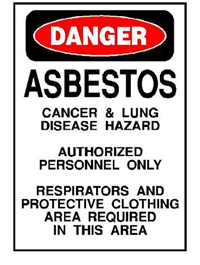Asbestos and Lead Paint
Asbestos

Asbestos is well recognized as a health hazard and is highly regulated. An estimated 1.3 million employees in construction and general industry face significant asbestos exposure on the job. Heaviest exposures occur in the construction industry, particularly during the removal of asbestos during renovation or demolition. Employees are also likely to be exposed during the manufacture of asbestos products (such as textiles, friction products, insulation, and other building materials) and during automotive brake and clutch repair work.
Providence College has already removed the vast majority of asbestos containing materials from the campus. Although some may remain, such as floor tiles or roofing materials, it is considered intact and safe. Testing is always performed prior to any renovations that may disturb suspect materials. Only trained and properly licensed contractors are allowed to handle asbestos containing materials. If you have any questions about asbestos containing materials on campus, contact the Office of Environmental, Health and Safety. For additional information regarding asbestos, click on the link below.
Lead

Lead exposure is a major potential public health risk. In general populations, lead may be present in hazardous concentrations in food, water, and air. Sources include paint, urban dust, water pipes, and folk remedies. Lead poisoning is the leading environmentally induced illness in children. At greatest risk are children under the age of six because they are undergoing rapid neurological and physical development.
Lead overexposure is one of the most common overexposures found in the construction and manufacturing industries and is a leading cause of workplace illness. Therefore, OSHA has established the reduction of lead exposure to be a high strategic priority. Providence College does its part by testing suspect materials prior to disturbance in order to prevent potential occupant and worker exposures. If you have any questions about lead containing materials on campus, contact the Office of Environmental, Health and Safety. For additional information regarding lead exposures, click on the link below.





